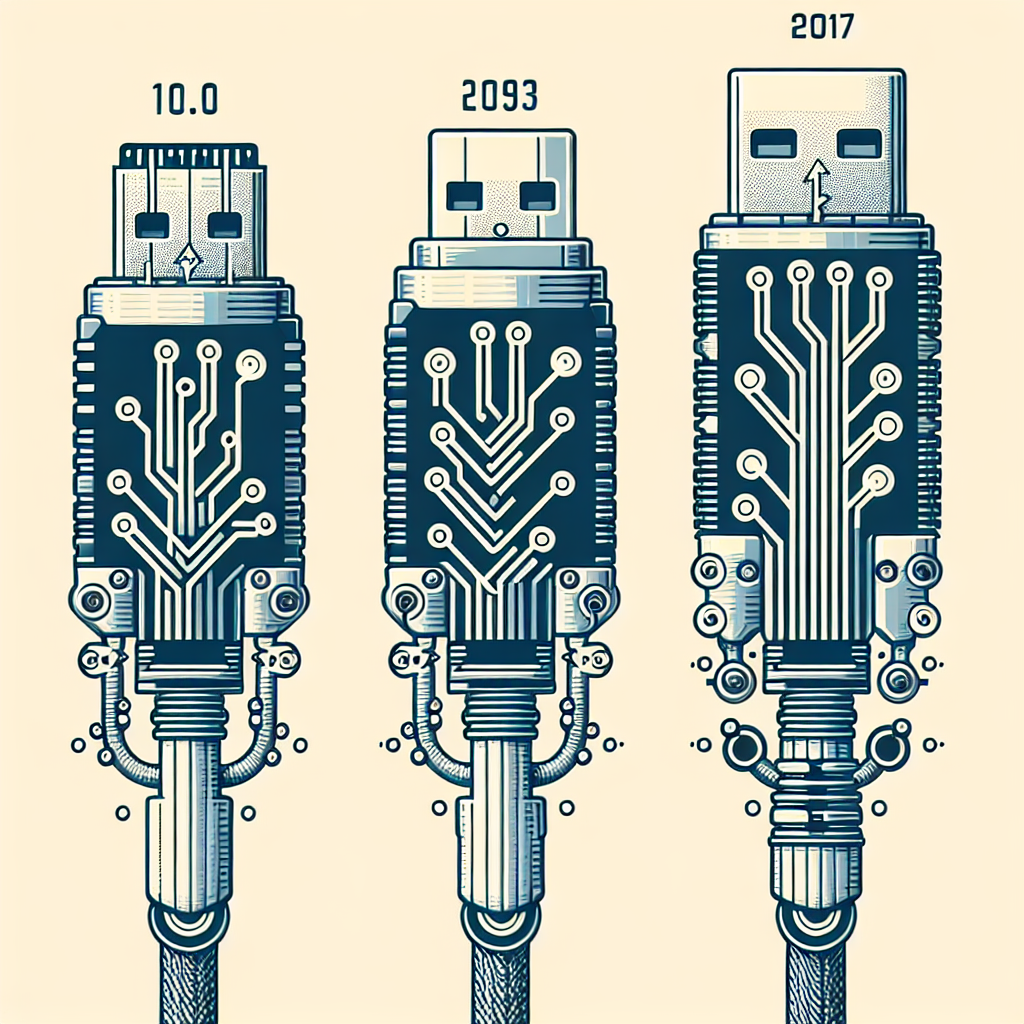Your cart is currently empty!
The Evolution of USB: From 1.0 to 3.0

The Universal Serial Bus, or USB, has become an essential component of modern technology. It allows for the easy connection of various devices to a computer or other electronic devices. Over the years, USB has evolved significantly, with each new version bringing faster speeds and improved functionality. Let’s take a look at the evolution of USB from 1.0 to 3.0.
USB 1.0 was the first version of the USB standard and was released in 1996. It had a maximum data transfer rate of 12 Mbps, which was a significant improvement over the slower serial and parallel ports that were commonly used at the time. USB 1.0 also introduced the concept of plug-and-play connectivity, allowing users to easily connect and disconnect devices without having to restart their computer.
USB 2.0 was released in 2000 and brought even faster speeds to the standard. With a maximum data transfer rate of 480 Mbps, USB 2.0 was ten times faster than its predecessor. It also introduced new features such as USB On-The-Go, which allowed devices to act as both a host and a peripheral, and improved power management capabilities.
In 2008, USB 3.0 was introduced, offering even faster data transfer speeds and improved power efficiency. With a maximum data transfer rate of 5 Gbps, USB 3.0 was ten times faster than USB 2.0 and 400 times faster than USB 1.0. USB 3.0 also introduced a new SuperSpeed mode, which allowed for even faster data transfers when using compatible devices.
One of the most significant improvements of USB 3.0 was its ability to provide more power to connected devices. This meant that devices could charge faster and operate more efficiently when connected to a USB 3.0 port. USB 3.0 also introduced backward compatibility with USB 2.0 devices, allowing users to continue using their older devices with newer USB 3.0 ports.
In 2013, USB 3.1 was released, offering even faster data transfer speeds of up to 10 Gbps. USB 3.1 also introduced a new Type-C connector, which is reversible and can be plugged in either way, making it more convenient for users. USB 3.1 is also backward compatible with USB 3.0 and USB 2.0 devices, ensuring that users can continue to use their older devices with newer USB 3.1 ports.
In conclusion, the evolution of USB from 1.0 to 3.0 has brought significant improvements in data transfer speeds, power efficiency, and connectivity options. With each new version, USB has become faster, more versatile, and more efficient, making it an essential component of modern technology. As technology continues to advance, we can expect to see further improvements in USB standards, ensuring that it remains a vital part of our digital world.

Leave a Reply